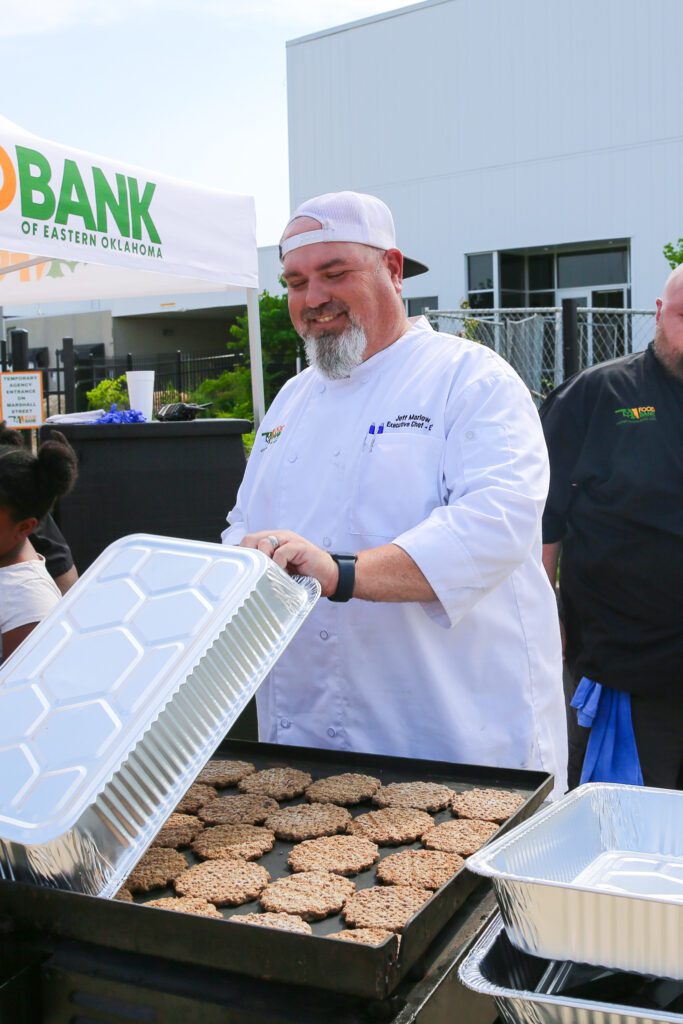Hunger remains a persistent problem throughout Oklahoma, not just in rural communities but in our largest cities, as well.
More than 500,000 Oklahomans are food insecure and more than 180,000 of those are children, according to statistics from Feeding America, a national nonprofit.
But food programs, partnerships and philanthropic efforts in the state are helping more people gain access to affordable and nutritious meals, say directors with two state organizations fighting the issue at the source.
“I know when Oklahomans hear all the stats of families struggling with hunger, it sounds overwhelming,” says Jeff Marlow, president and CEO of the Food Bank of Eastern Oklahoma. “But this is a solvable problem. Every gift of time or money makes a difference in the life of a neighbor struggling with hunger.”
Food insecurity is defined as a household-level economic and social condition of limited or uncertain access to adequate food, according to the U.S. Department of Health and Human Services.

Marlow and Chris Bernard, president and CEO of Hunger Free Oklahoma, say that partnerships among community groups, policymakers and organizations in the state play a key role in the issue.
Bernard says in recent years, he has seen more collaboration among groups in the state to take on the issue of hunger, to share resources and to utilize federal dollars and programs to give more people access to food. He also says he is hopeful about current legislative proposals to cover school meals for kids. But more help is needed, and there is more work to do.
Food banks in the state are seeing “higher needs than they’ve ever seen before,” says Bernard, and that’s been a steady growth from the time the COVID-19 pandemic started.
Marlow mentions that poverty, unemployment, low wages and inflation are some of the factors that can lead someone to fall into food insecurity.
“For families living paycheck to paycheck, they are just one unexpected incident or bill away from losing their grocery money,” he says. “The Food Bank and our partners are there to help them bridge that gap.”
So, how can Oklahomans help other Oklahomans experiencing food insecurities?
Volunteering and donating to organizations that help provide meals are both a huge help. But he also believes another effective approach is for people to talk with their elected officials about programs, policies, federal dollars and federal programs that can be utilized to help fight hunger.
Bernard says Hunger Free Oklahoma conducts public polling and “a vast majority of Oklahomans want to see more done” regarding the issue of hunger.
“All of that is a movement,” he says. “I think we’re still going in the right direction.”
Marlow believes that investing in organizations that focus on reducing hunger in the state helps expand the work that can be done.
“When you support the Food Bank of Eastern Oklahoma, you support more than 600 community-based partners working every day to feed Oklahomans,” he says. “If we all get involved, we can ensure that no one goes to bed hungry.”

Hunger by the Numbers
Hunger costs Oklahoma more than $1.4 billion each year through increased illness and decreased academic achievement among students.
A report from the U.S. Department of Agriculture shows 14.3% – or nearly one quarter of one million Oklahoma households – experience food insecurity.
For more information about the work being done statewide to address hunger or to get involved with the issue, visit Hunger Free Oklahoma at hungerfreeok.org and the Food Bank of Eastern Oklahoma at okfoodbank.org.























